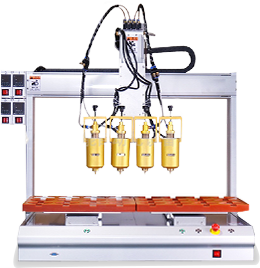

The stamping parts of the car charging module equipment shell focus on the charging scene of new energy vehicles. They are made of high-strength cold-rolled steel or lightweight aluminum alloy materials and are manufactured through precision stamping, bending and forming processes. Adapting to the car DC fast charging and AC slow charging modules, the shell design is compact, and the surface is treated by spraying, anodizing, etc., with impact resistance, corrosion resistance and insulation performance. The integrated honeycomb heat dissipation holes, status indicator window, and interface installation position accurately match the internal circuit layout of the charging module, provide physical protection for the power conversion components, and ensure the stable operation of the charging module in complex environments such as outdoors and garages. It is the core structural component of new energy vehicle charging equipment.
Features | Details |
Structural adaptation | Customized strictly according to the size of the charging module, the installation hole tolerance is ≤±0.1mm, compatible with mainstream fast charging (such as 15kW module) and slow charging modules, ensuring integration consistency |
Material protection | The cold-rolled steel model has strong impact resistance and prevents deformation by external forces; the aluminum alloy model is light in weight and has excellent thermal conductivity, assists the module in heat dissipation, and is suitable for high-power charging scenarios |
Function integration | One-time stamping integrates the heat dissipation grille, indicator light window, and grounding mark to simplify module design, improve production and assembly efficiency, and reduce the difficulty of later maintenance |
Environmental adaptation | The surface spray layer is resistant to salt spray for ≥500 hours, and the aluminum alloy is wear-resistant and insulated after anodizing, which meets the requirements of outdoor sun and rain, and humid and dusty garage environments |
3. Product Details
During the design phase, we conducted an in-depth investigation of the needs of new energy charging equipment. Combined with the high heat generation characteristics of the fast charging module (such as the heat dissipation requirements of the 15kW module), we used fluid mechanics simulation to optimize the layout of the honeycomb holes and accelerate the heat dissipation. The production uses a multi-station continuous mold and a servo press to achieve a shell bending accuracy of ≤0.5° and a hole burr of <0.05mm to ensure the safety of internal component installation. The surface treatment follows the strict standards of the automotive industry, and the spray color is optional to meet the appearance requirements of charging equipment of different brands.
The actual application covers new energy vehicle charging stations, car company supercharging stations, and community slow charging piles: creating a protective shell for the 15kW module of the DC fast charging pile to stably dissipate heat in high temperature outdoor environments; customizing the aluminum alloy fast charging module shell for car companies to reduce the overall weight of the equipment; designing a corrosion-resistant steel shell for the community slow charging pile to resist moisture erosion. With the characteristics of "high adaptability, strong protection, and excellent heat dissipation", it has become a key carrier for the hardware integration of new energy charging modules, helping fast charging equipment to operate efficiently and safely, and promoting the construction of new energy vehicle energy replenishment networks.
 Headquarters tel.
Headquarters tel. E-mail.
E-mail.